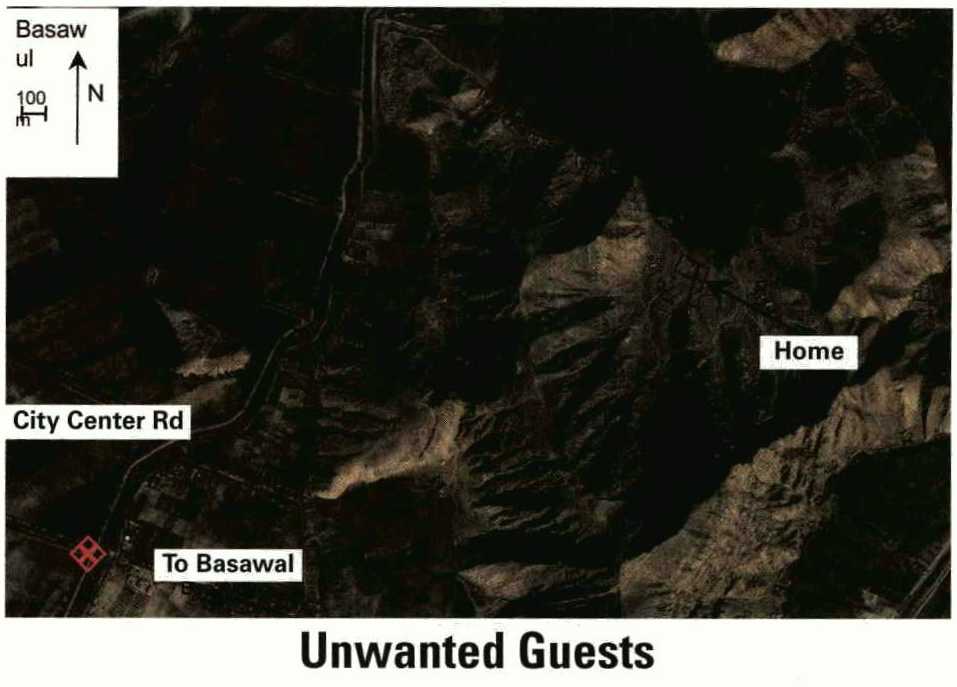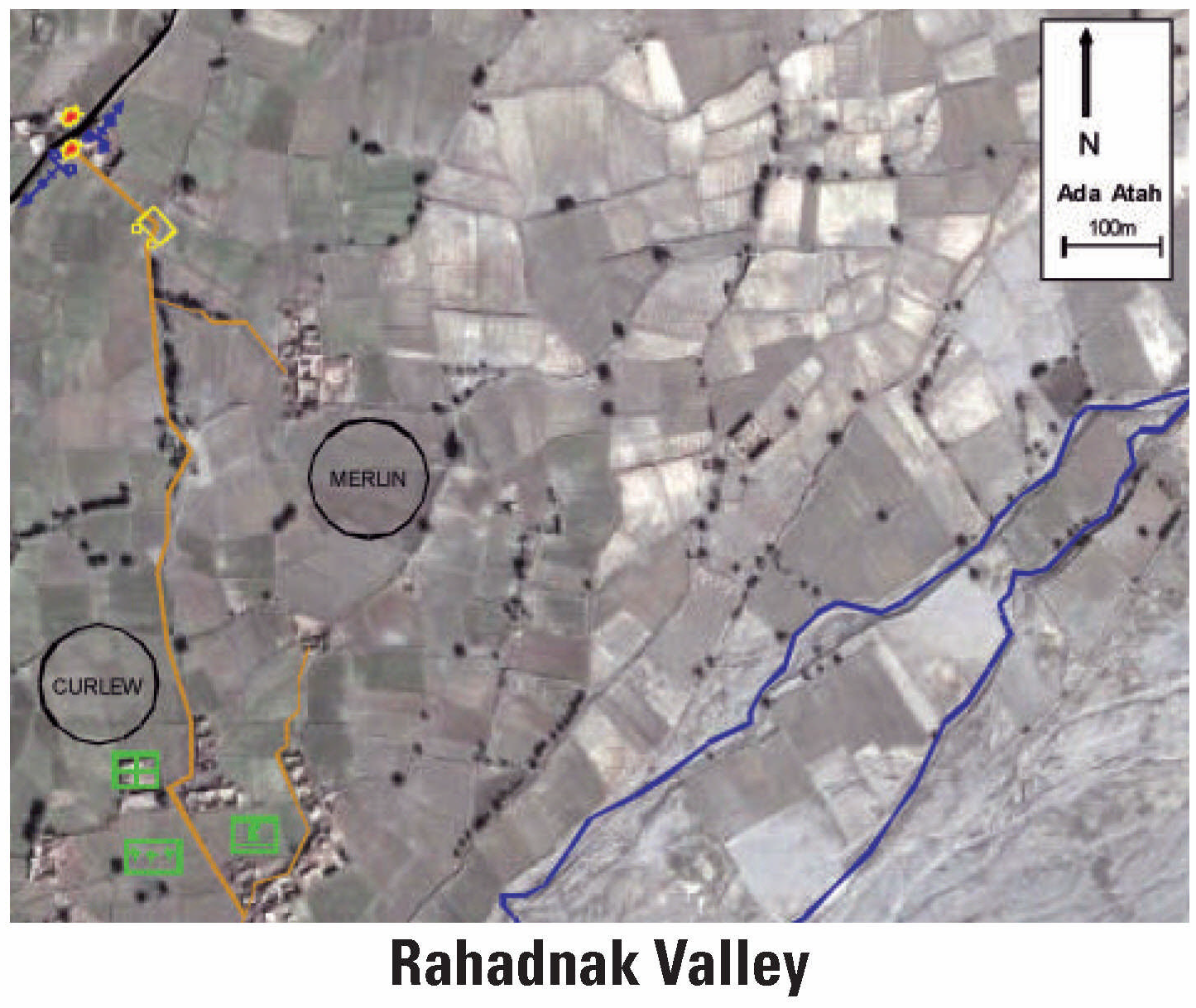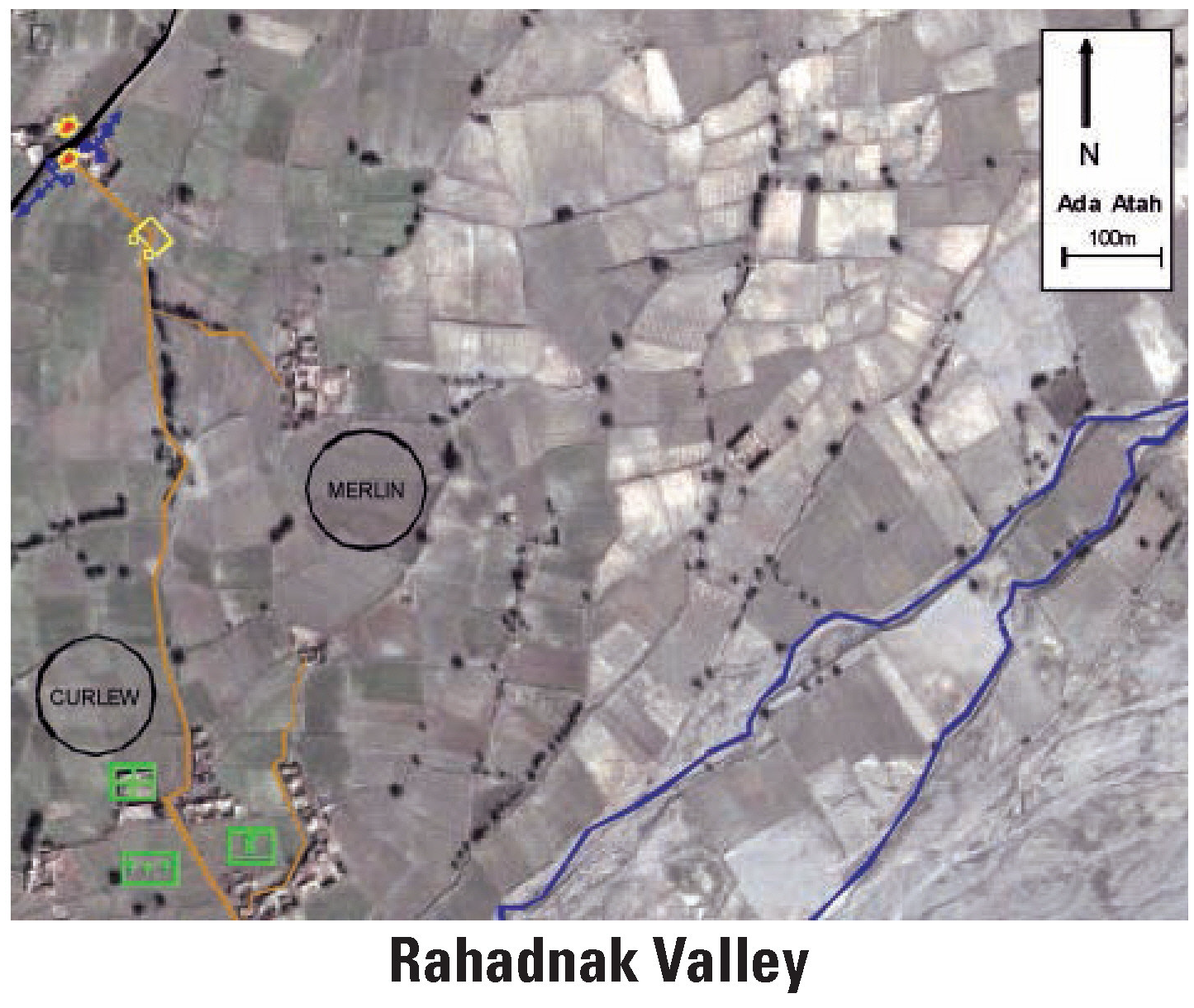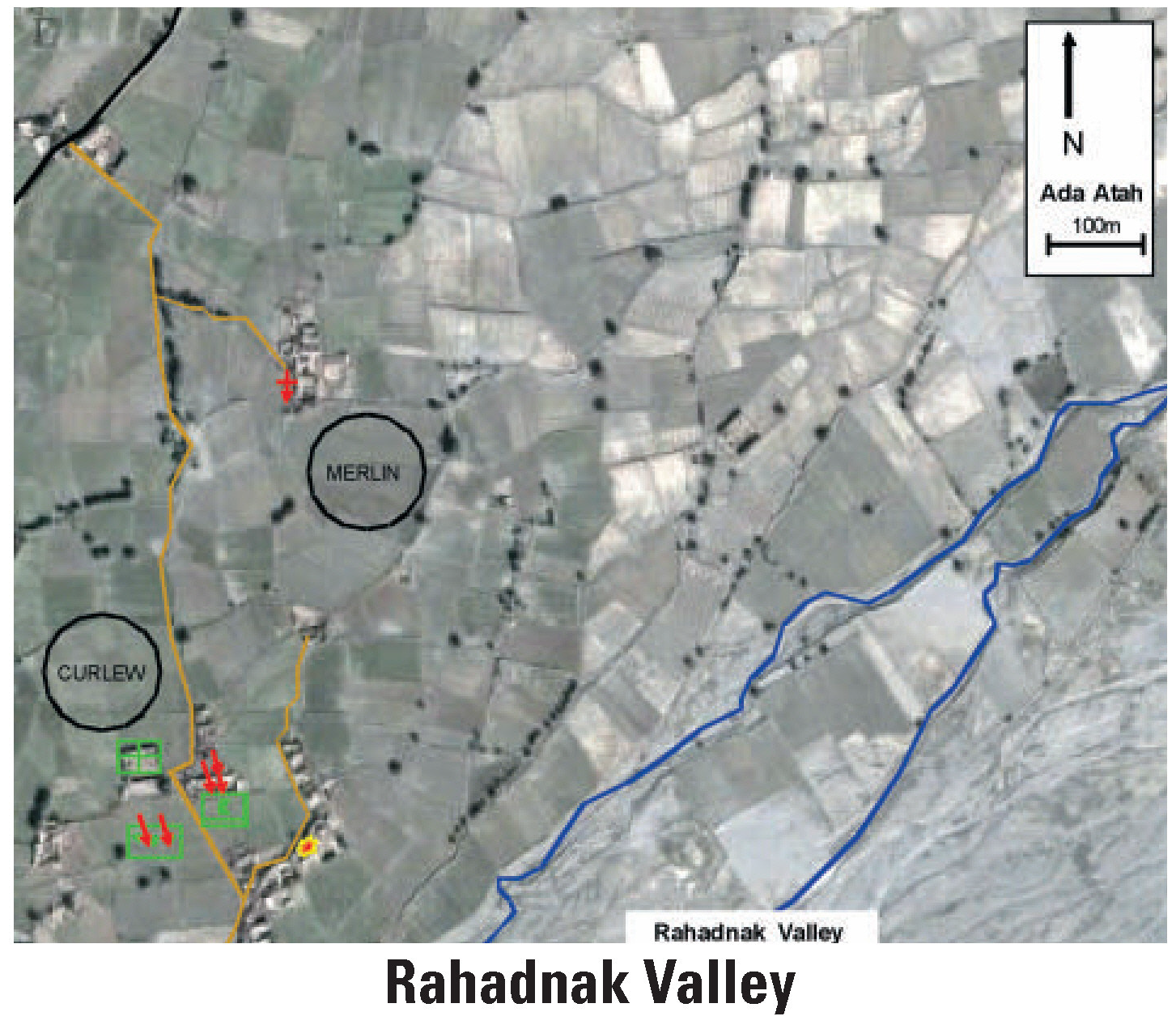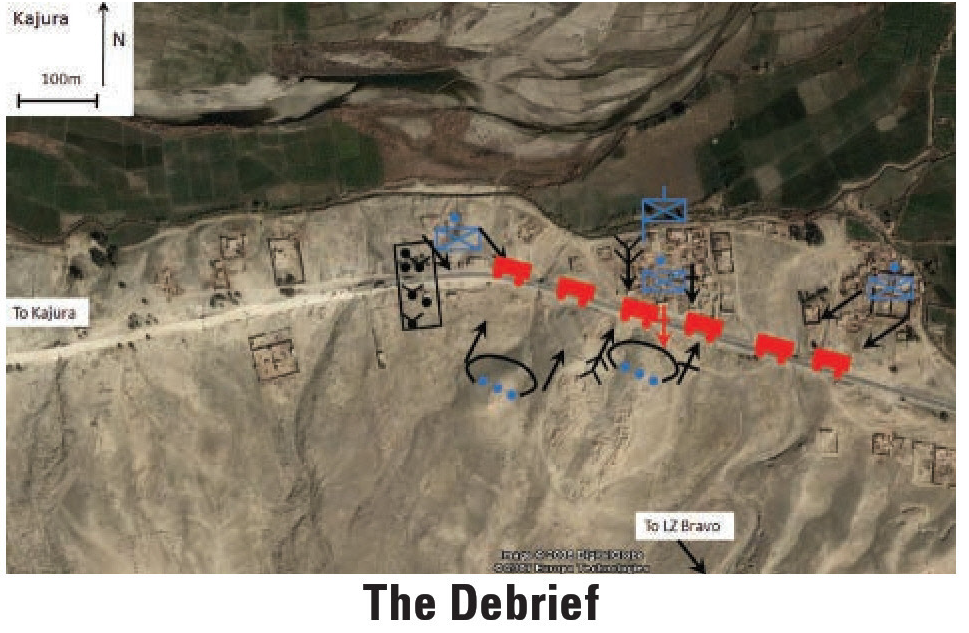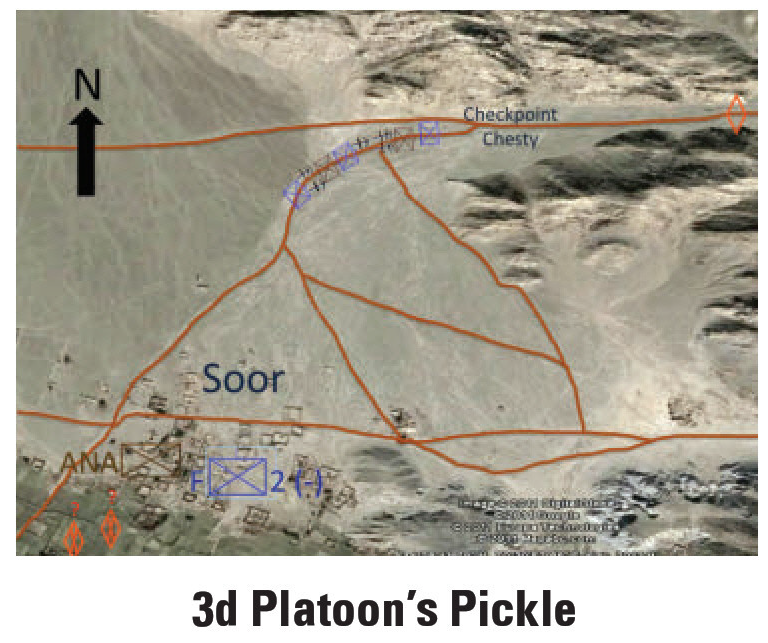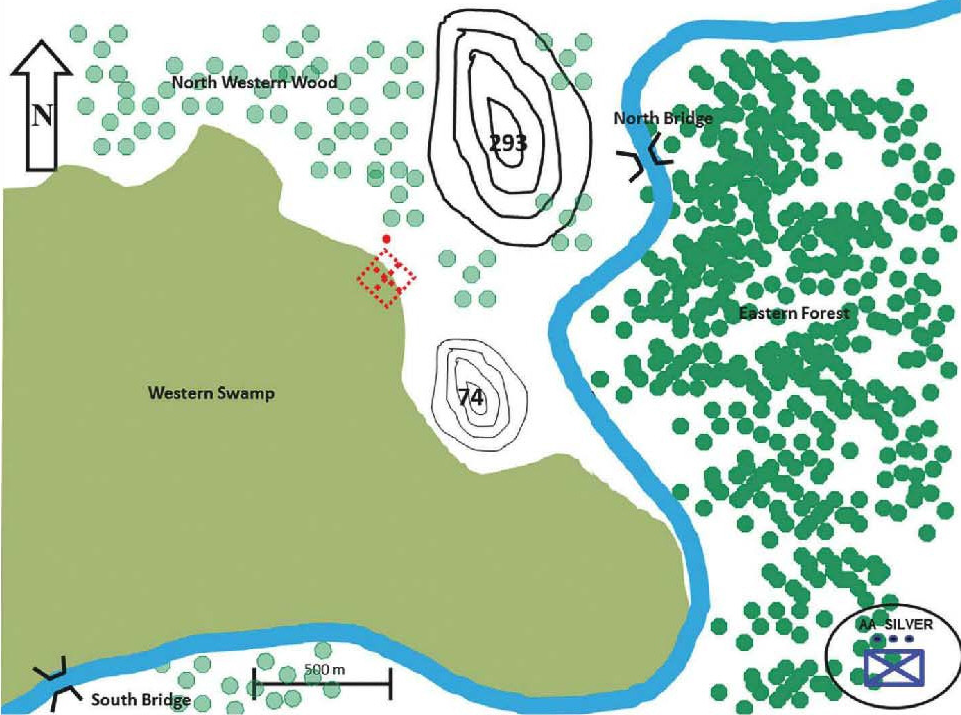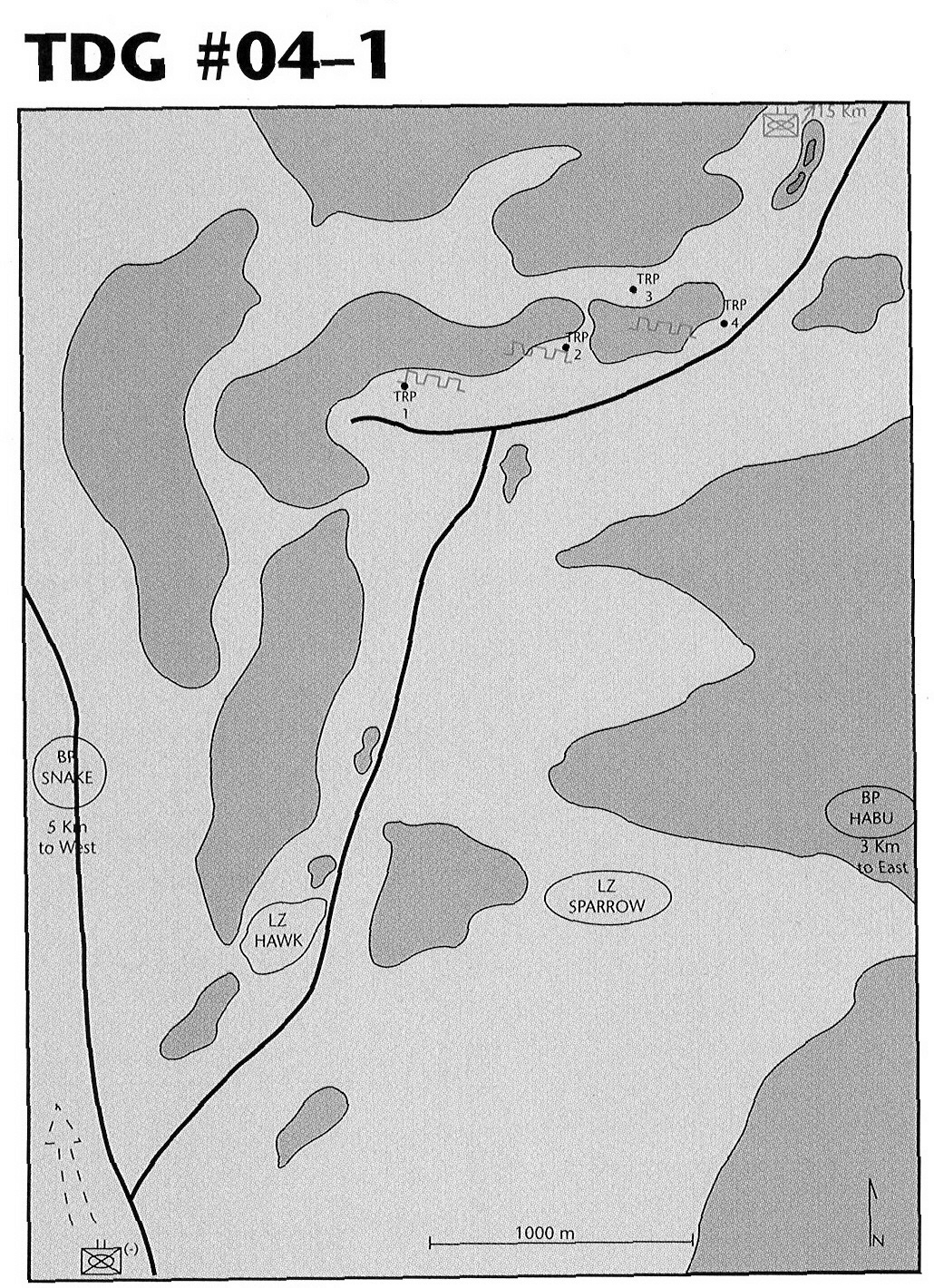Situation
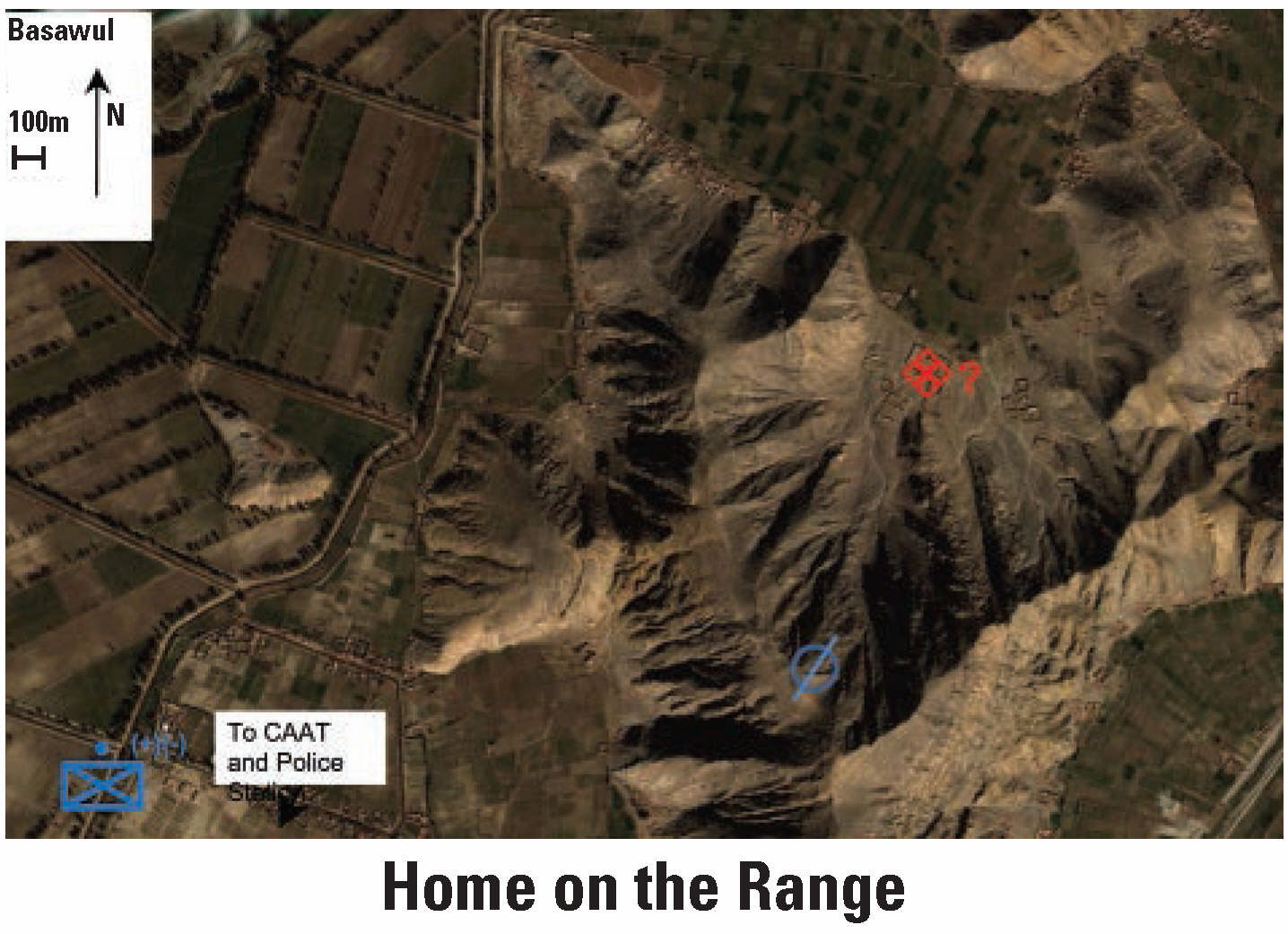
You are the 1st Squad Leader, 3d Platoon, Company F, Battalion Landing Team 2d Battalion, 1st Marines (BLT 2/1). Recently, the MEU was sent to Jalalabad, Afghanistan, in support of NATO forces during Operation Enduring Freedom. The MEU has been in country approximately 45 days and is assigned to the northeast sector of the area of responsibility, Nangarhar Province. Recently, your company has been assigned to the eastern sector of the area of operations (AO), a sector that includes the main road from Jalalabad to Pakistan through the Khyber Pass. Your company’s tasks include defeating anticoalition/insurgent/Taliban forces, halting the illegal flow of arms and explosives, and strengthening local government, police, and army forces. All of these tasks are executed in order to increase local stability and promote legitimate economic growth in the AO.
Your company commander assigned your platoon to the town of Basawul with the specific task of working with Afghan police in support of the BLT antiinsurgency campaign. The area around Basawul is arid, sparsely populated, and poor, with a market square in the town center. Extended families reside in low, single-story dwellings built around a central courtyard. You and your men are quite familiar with these dwellings from your weeks of patrolling and frequent house searches for weapons and contraband.
You command a Marine rifle squad (13 men) mounted in 3 HMMWVs, 2 with ring-mounted M240 machineguns, and 1 Afghan police pickup truck. Four Afghan policemen are attached to your squad for this patrol. The mission of your patrol is to interdict any insurgent forces or their supplies transiting your AO and to confiscate any caches of arms or equipment discovered in order to deny this region to the enemy as a sanctuary or supply source. The platoon has two personnel HMMWVs back at the police station, and the Afghan police have two more pickup trucks. One combined antiarmor team is approximately 10 minutes from the town and serves as a quick reaction force.
During an uneventful patrol through the local village you notice more than a dozen unarmed militaryaged men loitering about. You don’t recall seeing any of them before. Those who meet your gaze give you hard looks. You notice that the general store has sold out its small stock of canned goods. Per the patrol route, you drive by a circuitous route to a residence 4 kilometers east of town reputed to be the family home of a popular insurgent chief your battalion has long been after.
You halt your HMMWVs away from the residence, and you assign 1st Fire Team to advance with two of the policemen in the pickup truck to observe the house. You are able to observe through binoculars the team drive up the north side of a mountain, dismount, then ascend the mountain to observe the home. Approximately 5 minutes after they crest the ridgeline and you cannot observe them, your radio operator hands you the radio and says, “1st Fire Team.”
You receive the report. “There’s an unfamiliar pickup truck and a van parked in the courtyard. There’s an older man butchering a sheep in the front yard. Afghan police officer states that he believes the activities in the courtyard are in preparation for a celebration.” You hand the Afghan police officer the radio, and he talks to the Afghan police officer with 1st Fire Team. He then looks at you, shrugs his shoulders, and says in his broken English, “Something will happen, maybe tomorrow, maybe the next day.” He indicates the clear sky and says, “Tonight is a good night for a fight,” and smiles. You look at your watch and notice that sunset is in 80 minutes, and the patrol is due back in 60 minutes. What now?
Requirement
In a time limit of 20 minutes, indicate what actions you will take, issue your orders to your team leaders, give your report to your platoon commander, and make a recommendation on support you need from him to accomplish the mission.
Issues for Consideration
1. What do you believe will happen in the area over the next 4 hours and 24 hours that will impact the platoon’s mission?
2. What do you want to make happen?
3. How do your actions, orders, and recommendations do this? What is the task and purpose of the local police force, if anything?
4. Do your actions and their probable results escalate or deescalate violence in your AO?
5. Do you want to kill or capture possible opponents?
6. What considerations do you give to injury of noncombatants and damage to local property (collateral damage)?
7. Assuming your actions result in a fight and victory over insurgent forces, what actions do you take with regard to:
* Dead and injured enemy combatants?
* Dead and injured noncombatants?
8. Based on your actions in question 7, what do you expect civilian response will be to collateral damage:
* At the conclusion of fighting, while you are in the area?
* Within 1 hour after you leave?
* At the end of the day?
* At the end of the week?
9. Based on your actions in question 7, what is the expected enemy response to collateral damage:
* At conclusion of fighting, while you are in the area?
* Within 1 hour after you leave?
* At the end of the day?
* At the end of the week?
10. What actions can you and the BLT take to counter and exploit enemy and civilian responses to collateral damage:
* While you are in the area?
* After you leave the base?
* When you subsequently patrol in the area?
11. What actions can you, the BLT, and the local forces take to defeat enemy motivation to attack:
* While in the area?
* After you return to base?
* Over the next week?


